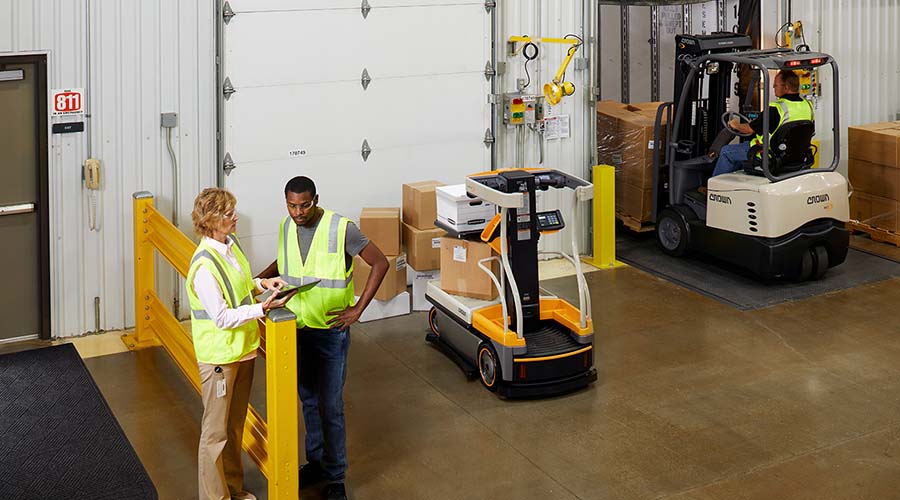Comprehensive Approach to Forklift Safety Best Path to Accident Prevention

There is no single, effective solution when it comes to eliminating forklift accidents. The best solution is a combination of a variety of approaches that collectively define expectation, reinforce safe behaviors and monitor activities to measure the effectiveness of the program. There are a number of considerations to consider when developing your forklift safety plan.
Create Effective Training
The method used to conduct training has a direct impact on the training’s effectiveness. It should be delivered in a way that directly engages students to boost retention. Safety habits taught in the classroom should also be practiced, such as looking before traveling, coming to a complete stop before disembarking, and proper posture while on the truck. This also provides the instructor with the opportunity to provide immediate feedback during the training session. This process of learning, doing and using the knowledge conveyed in the classroom will create a strong foundation for a comprehensive approach to safety.
One benefit of the classroom portion is that, through use of videos and animation, the instructor can display certain concepts of safety that may be difficult to convey through explanation or unsafe to demonstrate, such as the way forklifts can tip over and what measures an operator can take to prevent it.
Instill Safety Awareness in Supervisors and Pedestrians
By providing positive and constructive feedback, supervisors can help bolster efforts to improve forklift safety. Supervisors can also receive training to help them recognize and reward safe behaviors, which encourages others to mimic safe habits. Supervisors should also be encouraged to hold regular safety meetings to refresh prior operator training and encourage teams to provide suggestions for further improving safety.
Training should also be provided to those who work alongside forklifts such as pedestrians. Workers should understand not only what they can do to encourage safe habits but also what operators have been taught so they will have insight into how an operator might address a certain situation. This will encourage them to become an active participant in promoting safety, rather than a passive one who is, at best, prepared only to react to an unsafe situation.
Monitor Forklift Impacts
Many companies are now able to collect operational data for their fleets thanks to the addition of impact sensors to forklifts and wireless connections that communicate this information from forklifts through a fleet management system directly to management. Managers can use this information to evaluate the effectiveness of the company’s training programs, as well as identify potentially-unsafe operators and high-impact areas.
A fleet management system can also be used to facilitate completion of OSHA-mandated forklift inspections, ensuring accurate and consistent completion and full compliance.
Some adopters of fleet management are surprised at how many impact incidents occur on a regular basis. Although the high number of impacts might encourage managers to become less concerned over time, it is important to commit to investigating every impact as a significant event to demonstrate the company’s commitment to reducing impacts and encouraging safe behavior.
If every impact is treated as a serious event, with every event analyzed by management, operators will become more aware of improving safety habits. As a result, management may see fewer impact events and a reduction in the time necessary to investigate them.
Set Goals and Recognize Achievements
As safety data becomes more readily available, organizations can assess the success of their current safety programs over a long-term period, setting goals for individual operators as well as entire teams that will ensure continuous improvement. It is equally important to recognize when individuals or teams achieve goals as this recognition can provide motivation for the entire organization to continue to demonstrate safe behaviors.
It takes every individual within the organization to work within their role to practice and promote forklift safety. A comprehensive approach that reaches throughout the organization requires commitment, but ultimately is the best formula for success.